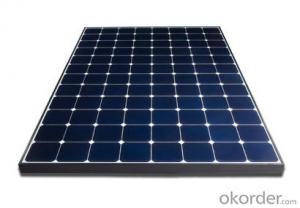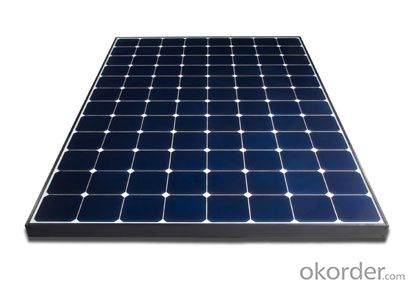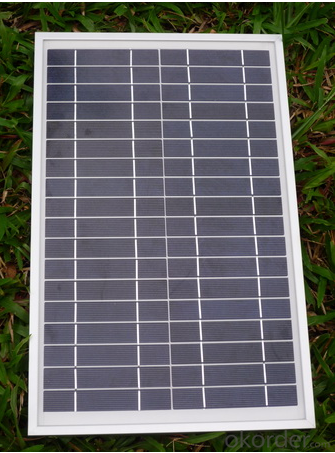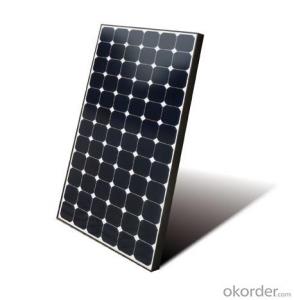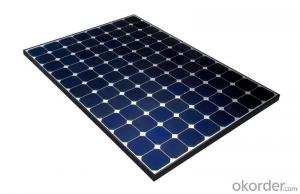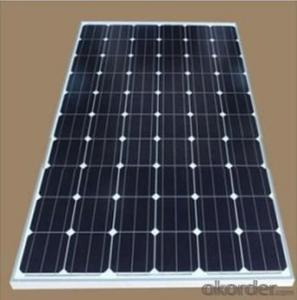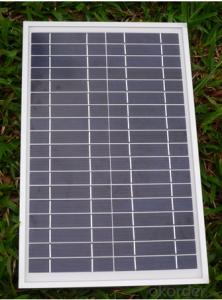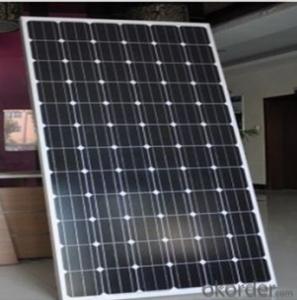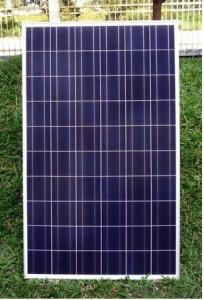Sdge Solar Panels:Poly Solar Panel 160w B Grade with Cheapest Price
- Loading Port:
- Shanghai
- Payment Terms:
- TT OR LC
- Min Order Qty:
- 100 watt
- Supply Capability:
- 10000 watt/month
OKorder Service Pledge
OKorder Financial Service
You Might Also Like
Specification
Poly Solar Panel 160W B Grade with Cheapest Price
Product description
A solar cell, or photovoltaic cell (in very early days also termed "solar battery"[1] – a denotation which nowadays has a totally different meaning, see here), is an electrical device that converts the energy of lightdirectly into electricity by the photovoltaic effect, which is a physical and chemical phenomenon.[2] It is a form of photoelectric cell, defined as a device whose electrical characteristics, such as current, voltage, or resistance, vary when exposed to light. Solar cells are the building blocks of photovoltaic modules, otherwise known as solar panels.
he photovoltaic effect was experimentally demonstrated first by French physicist Edmond Becquerel. In 1839, at age 19, he built the world's first photovoltaic cell in his father's laboratory. Willoughby Smith first described the "Effect of Light on Selenium during the passage of an Electric Current" in a 20 February 1873 issue of Nature. In 1883 Charles Fritts built the first solid state photovoltaic cell by coating the semiconductor selenium with a thin layer of gold to form the junctions; the device was only around 1% efficient.The efficiency of a module determines the area of a module given the same rated output – an 8% efficient 230 watt module will have twice the area of a 16% efficient 230 watt module. There are a few solar panels available that are exceeding 19% efficiency. A single solar module can produce only a limited amount of power; most installations contain multiple modules. A photovoltaic system typically includes a panel or an array of solar modules, a solar inverter, and sometimes a battery and/or solar tracker and interconnection wiring.
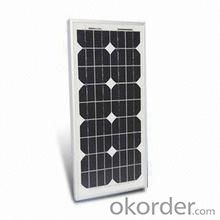
Application
Business
Home
Industry
Large project
Feature
1. A grade high efficiency solar cells.
2.TUV/UL/CE/CEC etc
3.Fast shippment
4.25 years warranty
5.OEM/ODM
Packaging
28pcs into one carton
Shipping
Material in stock can be produced (procedure 5-20days) right away after pre-payment confirmation. COSCO Mearsk MSCship to worldwide for safe shipping, don't worry about package damage or loss. It takes about 15-40 days to worldwide, Please note us your contact details include your phone number for easy contacting from shipping company officer.
- Q: I'm thinking of having solar panels to generate electricity. The drawbacks are that I'm afraid if it needs repair, I won't be able to find anyone. Also I'm afraid that the roof is not very accessible. If it is a new house, should the roof have a roof hatch? What can make the system not work?
- Modern solar electric panels rarely fail. Because of this, if you would be installing them over a roof that only has a few years left on it, it would be better to redo the roof, first. In the unlikely event that a panel needs to be changed, this can be done in 30 minutes or so, because the panels are mounted on racks, with everything simply plugging together. I have never personally seen a solar installation go bad, but from what I hear, the inverter (a box that goes in next to your electric service panel) is usually what burns out after 5 years, assuming the install was done right in the first place. If you were to call roofers to repair your roof, they would somehow be able to get to your roof, by ladders, or a special truck. Solar installers use the same kind of equipment. They won't have a problem getting up there. A solar electric system is actually a very straightforward thing. No matter who installs it, if there is a problem, another installer should be able to diagnose and fix it.
- Q: I am completely ignorant on this subject. I was just wondering out of curiosity of how many solar panels and equipment that it would take to run a central ac for a 2500 sq ft home and a pump for a medium sized pool. I'm talking running ac for like 8 hours a day to keep around 65-70 degrees and running the pump 24/7. Just looking for a general ballpark answer.
- Solar panels are not going to be able to run a pool pump 24/7. They will only produce their rated electricity for 4 to 8 hours a day. For the balance you will need a grid connection or a battery backup. Running the AC would require different power levels depending upon humidity, outside temperature levels, solar gain for the house, and insulation levels. An underground house in Maine will be much easier to AC than a Glass house in Arizona. First find the power requirements. If you had the existing equipment they will have a label with the power requirements or the minimum breaker required if nothing else. For example the pool pump may require a 0 amp 240 breaker while the AC may require a 30 amp 240 breaker. That would be 2400 watts for the pump and (30 x 240) 7200 watts for the AC or a total of 9.6kW each hour of operation. (max) You will next need to find the rated capacity of the solar panels. If each panel were rated at 300 watts then you would need 32 panels for the daytime use and perhaps more to fill in a battery backup. All the numbers are very rough estimates.
- Q: Can solar panels be installed in a remote location?
- Yes, solar panels can be installed in remote locations. In fact, remote areas with limited access to electricity grids can greatly benefit from solar panel installations. Solar panels are designed to operate independently and generate electricity from sunlight, making them an ideal solution for off-grid locations. They can be installed in remote areas such as deserts, mountains, or even on boats, providing a reliable and sustainable source of power.
- Q: Can solar panels be installed on ground-mounted structures?
- Yes, solar panels can be installed on ground-mounted structures. Ground-mounted solar panel systems are commonly used when rooftops are not suitable for installation or when larger solar arrays are required.
- Q: Can solar panels be used in cloudy regions?
- Yes, solar panels can still be used in cloudy regions. While solar panels are more efficient in direct sunlight, they can still generate electricity in cloudy conditions. Clouds diffuse sunlight, but some sunlight still reaches the solar panels, allowing them to produce power. However, the energy output may be lower compared to sunny regions.
- Q: Can solar panels be installed on a data storage facility or server farm?
- Yes, solar panels can be installed on a data storage facility or server farm. In fact, many data centers and server farms are now incorporating solar power as a sustainable energy solution. By harnessing solar energy, these facilities can reduce their reliance on traditional electricity sources and lower their carbon footprint. Installing solar panels on such facilities not only helps them achieve cost savings in the long run but also contributes to a more environmentally friendly operation.
- Q: I want to be more self sufficient and get solar panels for electricity in a small house any tips will help. i need to know how many watts is enough and ect.
- That's okorder , they have been extremely helpful from the initial planning process to the installation and upkeep. Use their Solar Panels Online Solar Sizer to determine how much solar you will require. A lot of it depends on your usage and size of home, but also where in the US you live. Best of luck.
- Q: Pros and Cons if I get solar panels?
- At the present time, even with the government paying some, they are not cost effective. If you live in middle of nowhere and you want to be prepared in case all Hell breaks loose, and you can install your own, then I might consider them as a backup plan only if I did not have a running stream with 0 feet of drop. You can make a water generator really cheap if you have that creek. Call a solar panel company and get a quote. Do the math and see how long it takes for pay back. They are also allergic to hailstorms. My son did and it was something like 40 years to break even.
- Q: Ok so i'm writing this research paper on why solar panels are the best way to quot;go greenquot;. I need at least 5-7 reasons why they are good. and a common counterargument that i could defend. I've already come up with incentives and efficiency but i need a few more Please help its very important and worth half my grade
- Actually, solar energy IS a good one. It's something we all need to think about, especially when coal and oil become harder to get. Good luck with your paper!
- Q: How do solar panels affect the roof's structural integrity?
- Solar panels do not significantly affect the roof's structural integrity when properly installed. The panels are mounted on a rack that evenly distributes the weight, and professional installers ensure that the roof can handle the additional load. In fact, solar panels can even provide some protection to the roof by shielding it from the elements.
Send your message to us
Sdge Solar Panels:Poly Solar Panel 160w B Grade with Cheapest Price
- Loading Port:
- Shanghai
- Payment Terms:
- TT OR LC
- Min Order Qty:
- 100 watt
- Supply Capability:
- 10000 watt/month
OKorder Service Pledge
OKorder Financial Service
Similar products
Hot products
Hot Searches
